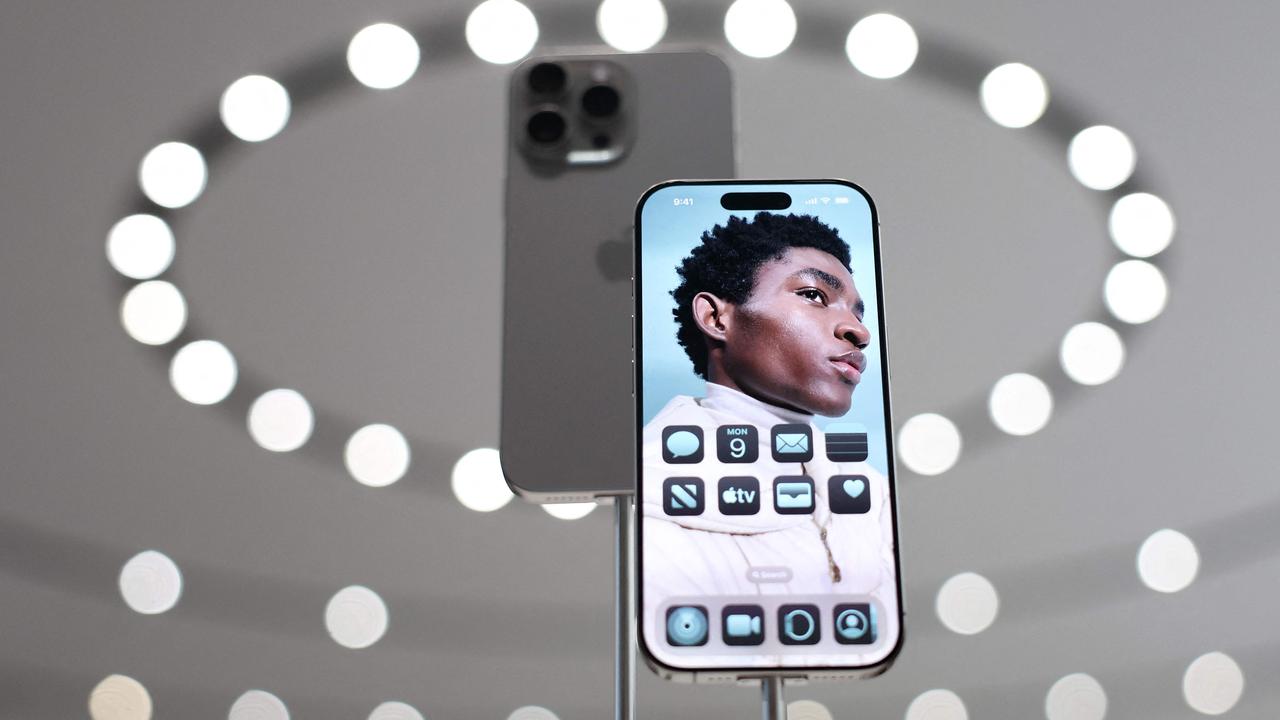TikTok CEO Kevin Mayer resigns
The tech executive has resigned just days after declaring he would sue the Trump administration.

Hello and welcome to The Download, The Australian’s technology blog for the latest tech news.
David Swan 2.45pm: TikTok CEO resigns
TikTok chief executive officer Kevin Mayer has quit his role, just two days after the social media company said it would sue the Trump administration over an executive order effectively banning the China-owned application unless it’s sold.
Mr Mayer has quit just months after his appointment, and will be replaced on an interim basis by general manager Vanessa Pappas.
“In recent weeks, as the political environment has sharply changed, I have done significant reflection on what the corporate structural changes will require, and what it means for the global role I signed up for,” he said in a letter to employees, seen by The Australian.
“Against this backdrop, and as we expect to reach a resolution very soon, it is with a heavy heart that I wanted to let you all know that I have decided to leave the company.”

A TikTok Australia spokeswoman said, “We appreciate that the political dynamics of the last few months have significantly changed what the scope of Kevin‘s role would be going forward, and fully respect his decision. We thank him for his time at the company and wish him well.”
The company’s Australian arm has been on a charm offensive in recent weeks, including a widespread advertising campaign calling on Canberra to not treat TikTok ‘like a political football’.
The company has faced scrutiny due to its alleged insecurities and ties to the Chinese government.
Companies rumoured to be interested in purchasing TikTok include Microsoft, and enterprise tech giant Oracle.
TikTok’s parent ByteDance reportedly generated $US17bn ($23.8bn) in revenue last year. The platform’s recent growth had been phenomenal; in the final quarter of 2019, TikTok had 219 million first-time installs.
Chris Griffith 9.00am: Chironix offers Zoom calls through glasses
You can now make Zoom calls from glasses. The popularity of Zoom for video calls and conferences means someone was bound to make the platform available literally in front of your nose.
Perth firm Chironix has achieved exactly that, but at this stage, you won’t be able to Zoom using the glasses you buy from your local optometrist. You’ll need to have Google’s Glass for Enterprise 2, the work oriented form of Google Glass that came about after the failure of the more ubiquitous Google Glass project targeting consumers. That is several years ago now.

Chironix is calling its software Metix, and the idea is that you could don Google Glass and hold a Zoom conversation with a technical expert located somewhere else in the world. They would see exactly what you see in front of you, and could offer you technical advice about, say, how to fix a circuit board while you go about making the repair.
The wearer would still see whatever is in front of them, but they could glance up to see that expert in the top section of the screen. Alternatively the expert might display a visual prompt, such as a circuit diagram, to help you make the repair.
Chironix says Metix on Google Glass for Enterprise 2 would be useful to health professionals and maintenance teams, a way to talk, interact and collaborate with others in remote locations anywhere they need.
Chironix says it has been testing Metix with companies across mining, healthcare, defence and agriculture.
“Zoom made video conferencing and collaboration easier and more accessible for millions of knowledge workers all around the world, as we have seen in recent months,” says Daniel Milford, founder and managing director of Chironix.
“We wanted to make that possible for the millions of workers out in the field, who lacked an easy way to talk with their teams and share information while dealing with the physical world.
“We’re now able to give workers instant access to expert advice via a hands-free, live video conference. Colleagues and management can effectively appear on site by ‘seeing exactly what they see’ in real time.”
Google Glass Enterprise 2 costs $1750 with the Metix software costing $550. Details here.
Chris Griffith 8.30am: DJI announces a generation 4 Osmo
Drone maker DJI has enjoyed more recent success with its Osmo handheld smartphone stabilisers. Not only can you take extremely smooth video from a smartphone, the fourth generation Osmo (branded as OM 4) supports new capture modes. That’s achieved by having the Osmo app running with the phone mounted.

You can use “ActiveTrack 3.0” to select a subject in the viewfinder and have the gimbal automatically track them as you shoot video on the phone. Osmo says the new version of ActiveTrack has improved distinction between subjects such as adults, children, and pets. Framing during ActiveTrack can now adjusted by using the dedicated joystick for enhanced control.
You can use hand gestures to take photos and start and stop video recording, and use pre-programmed gimbal sequences for cinematic effects. DJI says the DynamicZoom effect automatically adjusts the zoom function to create the dramatic background shift made popular by Alfred Hitchcock. Just don’t get too scared during the filming.
The gimbal and your phone can combine to create timelapse, motionlapse and hyperlapse scenes with the app co-ordinating the effects of movements with the three-axis gimbal and the phone’s electronic stabilisation.
The OM4’s other features include slow-motion, sport mode, panoramas, “spin shots” and story mode templates with preset movements, music and colour palates for quick movies for sharing on social media.
The new feature, hardware wise, is the ability to attach the phone to the gimbal using a magnetic bracket which DJI says makes the process easier.
The Osmo Mobile (OM) price has dropped considerably over the years. The OM 4 will sell for a recommended $239.
8.15am: New Apple privacy feature will aid users but hit Facebook’s bottom line
Facebook says privacy changes in Apple’s latest operating system would cripple its ability to place personalised ads and deal a financial blow to app-makers, highlighting a high-stakes clash between the tech titans over the rules of the road in the mobile-internet economy.

Under Apple’s changes, which will go into effect in Australia this spring in its iOS14 operating system, Facebook and other companies that facilitate online advertising will no longer be able to collect a person’s advertising identifier without the user’s permission. Many apps will begin asking users whether or not they want their behaviour on the web to be tracked for the purposes of personalised ads.
Facebook fears many users will reject tracking, if given the choice, affecting not only its business but also any app that uses its services to sell ads, from game-makers to news publishers. Facebook told app developers on Wednesday the changes will affect its “Audience Network” business, which facilitates ad sales in outside apps.
Apple’s move also will hit Google’s AdMob unit, which facilitates ad sales in apps, as well as several ad-technology companies that rely on tracking iPhone users. Apple’s ad identifier, or IDFA, is a 32-character string of numbers widely used in the digital ad and data-broker industries to match up datasets that reveal where users go online, what they do and what they buy.
The Wall Street Journal
8.00am: North Korea hacks into banks worldwide
North Korean hackers are tapping into banks around the globe to make fraudulent money transfers and cause ATMs to spit out cash, the US government has warned.

A technical cybersecurity alert jointly written by four different federal agencies, including the Treasury Department and FBI, said there had been a resurgence in financially motivated hacking efforts by the North Korean regime this year after a lull in activity.
“Since February 2020, North Korea has resumed targeting banks in multiple countries to initiate fraudulent international money transfers and ATM cash outs,” the warning reads.
US law enforcement titled the hacking campaign “Fast Cash” and blamed North Korea’s Reconnaissance General Bureau, a spy agency, for it. They described the operation as going on since at least 2016 but ramping up in sophistication and volume recently.
Over the last several years, North Korea has been blamed by US authorities and private sector cybersecurity companies for hacking numerous banks in Asia, South America and Africa.
“North Korean cyber actors have demonstrated an imaginative knack for adjusting their tactics to exploit the financial sector as well as any other sector through illicit cyber operations,” Bryan Ware, a senior cybersecurity official at the US Homeland Security Department, said in a prepared statement.
Cybersecurity experts and foreign policy analysts have said these types of hacking operations are conducted to help fund the North Korean government, which is cash-strapped due to expansive sanctions continuously placed on it by the US and other western countries.
“The continued attacks are proof of the reliance the regime has on these funds, along with being a testament to their technical ability and determination,” said Vikram Thakur, a technical director for US cybersecurity firm Symantec.
Reuters



To join the conversation, please log in. Don't have an account? Register
Join the conversation, you are commenting as Logout